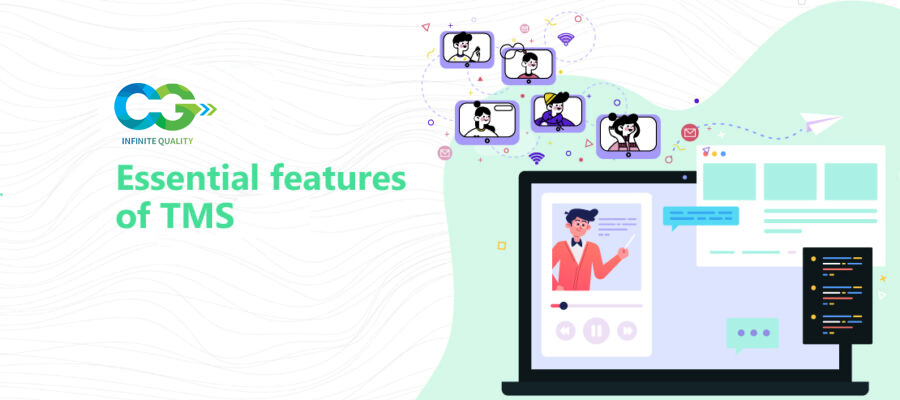TMS | Training Management System | Essential features of TMS

Article Context:
TMS
The life sciences are regulated for ultra-specific requirements in terms of compliance. To reach the level of compliance, the training management system (TMS) should have digital core features which are tailored.
Below are some of the essential core features of TMS that help life science companies meet industry-specific regulatory requirements.
Part 11 compliant non-editable audit trails on critical assignment activities
The regulatory system enforced secure, computer-generated, time-stamp audit trails with user details of who, when, and what editions took place independently, proving electronic records’ creation, modification, and deletion.
Compliance Group Training management system logs out every minute edit from creating training requirements to assigning it to trainees and their progress – completion, adding a trainee to removing the trainer’s permission and roles in real-time.
The audit log meets the regulatory compliance with the mentioned criteria, such as user id, time–date stamp, and the involved edits and recommendations.
21 CFR, Part 11 Complaint Electronic Signatures on training requirements
Training and development are essential aspects of life sciences industries. So training records are the first thing constantly surveilled in FDA inspection. The critical factor to look for while choosing a validated TMS is how it deals with the 21 CFR, Part 11 Compliant e-signature requirement.
In TMS, the training documents can be configured to get authorized with an approval workflow. The approvals are executed with electronic signatures, the document training when assigned, and the training completion status by trainees/users on the document are authorized with electronic signatures.
The compliant regulations have set an expectation on e-signature format to include the signer name, the signature execution date and time, and their relation in terms of comments like review, approval, completion of training, etc.
TMS upholds the strict regulatory terms comprising of the first – last name of the signer, date – time stamp of signature execution, the user ID, comments, and their designation. In addition, the signature comments are custom configurable as the organization requires.
Assignment – Assessment-Based Training
The FDA introduces training management in the industry regulations to develop knowledge and skill and provide equal opportunity to gain understanding to perform the job duties correctly. Assignment and assessment are the two most critical features of TMS.
TMS enables the trainers to assign training based on role-based access groups. In addition, it allows them to create multiple learner roles to assign the document training for a group or department to perform the tasks correctly.
Assessments enhance user performance management over the changes implemented in procedures, policies, methods, and work instructions. As the changes eventually impact the organization, the training requirement is triggered and assigned to the users to get trained on the new methods. Assessment helps the organization quickly transition from the old process to a new approach. With assessment, not only do the users or trainees understand the strategic needs expected from them instead, the organizations get to know the feedback of training in improving user performance at the workplace.
TMS is equipped with assessments allowing the managers to gauge the training performance with fill-in-the-blanks, multiple choice questionnaires, and simple-rich text descriptions. The completion of training and evaluation is authorized with the user’s digital signature.
Role-based access controls
A training management system for a life sciences company should have strict security roles functionality. Organizations need to limit who can modify system configurations, update training materials, assign tasks to trainees, etc.
TMS enables role-based permission sets for users, trainers, trainees, managers, and administrators.
Integrated Document Management System
It is recommended that all types of training materials, including standard operating procedures, policies, and work instructions, be version controlled in a life science training management system. The TMS must automatically trigger new retraining activities when GxP-controlled documents are revised in the Document Management System (DMS).TMS supports this level of integration with document management systems. As soon as a policy or SOP is “versioned up” and authorized for DMS training, TMS automatically initiates a new training assignment.
Real-Time Analytics
The importance of training lies in its effectiveness, and to gauge the training effectiveness, real-time reports and analytics play a critical role in TMS. Reports on training analysis provide the basis for measuring success. A significant component of measuring this success is the creation and analysis of training analysis reports.
Generally, a TMS makes it challenging to extract the Training data due to cumbersome reporting functionality within a TMS for the life sciences industry.
Below are some of the requirements that a life science company should look for while opting for a TMS in terms of reports and analytics.
The system must adhere to the GMP regulations and instructions while providing orientation training to job users.
Establish critical skill-based job tasks and operations by documenting work processes
Describe the process of how employees are trained on SOPs (procedures) when critical procedural changes are made or when the changes require corrective actions.
Show the list of training requirements created and assigned and the progress status of each user on the assigned training requirement.
Document the on-the-job training for each function as specified in the procedure and process before the employee performs such tasks.
Provide digital evidence of training requirements created, assigned, and completed indicating the time-date stamp with the authorized signature of the trainer and the trainee.
Be able to retrieve training records, trainee progress in real-time quickly, and determine which trainees have been trained on a particular procedure or have attended a particular training session.
In support of the qualification-based life sciences training program, TMS makes it easy to generate, customize and schedule training, compliance, and trainer-trainee reports.
The above list is not the complete list of a training management system’s features; it is also important to consider some business-specific TMS features. If you are considering purchasing a training management platform, these are the main features you should look for. To begin your research, get in touch with us to know the full features of TMS that suit your business needs in one platform.